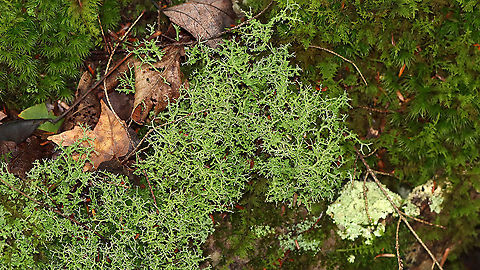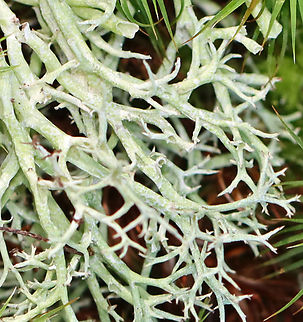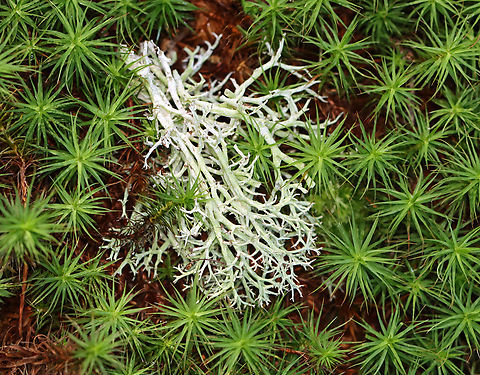
Appearance
Like other lichens in the genus "Cladonia", the fruiting body of "C. furcata" is made of a flattened primary thallus and a secondary upright stalk that forms the secondary thallus. The secondary thallus – the "podetium" – is extensively branched, and may reach up to 10 centimetres tall. The podetia ranges in color from grayish or pale green to brown. The axil, the inner junction of a branchlet with a branch or with another branchlet, is open, with inrolled branches, and frequently with a longitudinal groove that extends down the podetium from the axil. The fertile branches of this lichen are more or less flattened, and often grooved. "C. furcata" does not have the vegetative reproductive structures soredia and isidia, but instead has apothecia—cup-like ascocarps that contain asci on which ascospores are borne. The apothecia are brown, small, and borne at the end of the branches.
Distribution
"C. furcata" is most commonly found in forests near coastlines, at low to mid elevations. It may be found growing on moss, humus, and soil, more rarely on rotten wood or at the base of trees. In North America, it is found from Alaska to California, and is very common in the west Cascade range.
Habitat
"C. furcata" is most commonly found in forests near coastlines, at low to mid elevations. It may be found growing on moss, humus, and soil, more rarely on rotten wood or at the base of trees. In North America, it is found from Alaska to California, and is very common in the west Cascade range.References:
Some text fragments are auto parsed from Wikipedia.